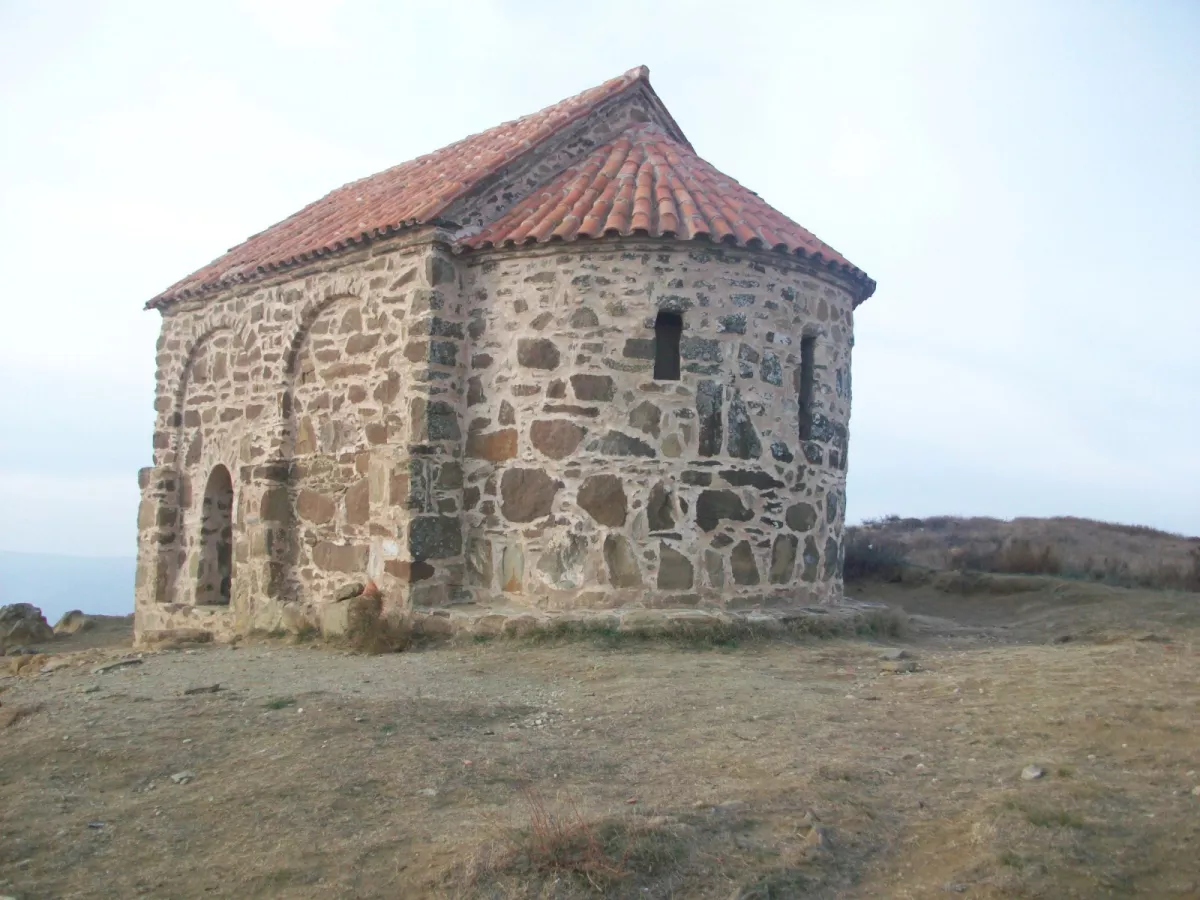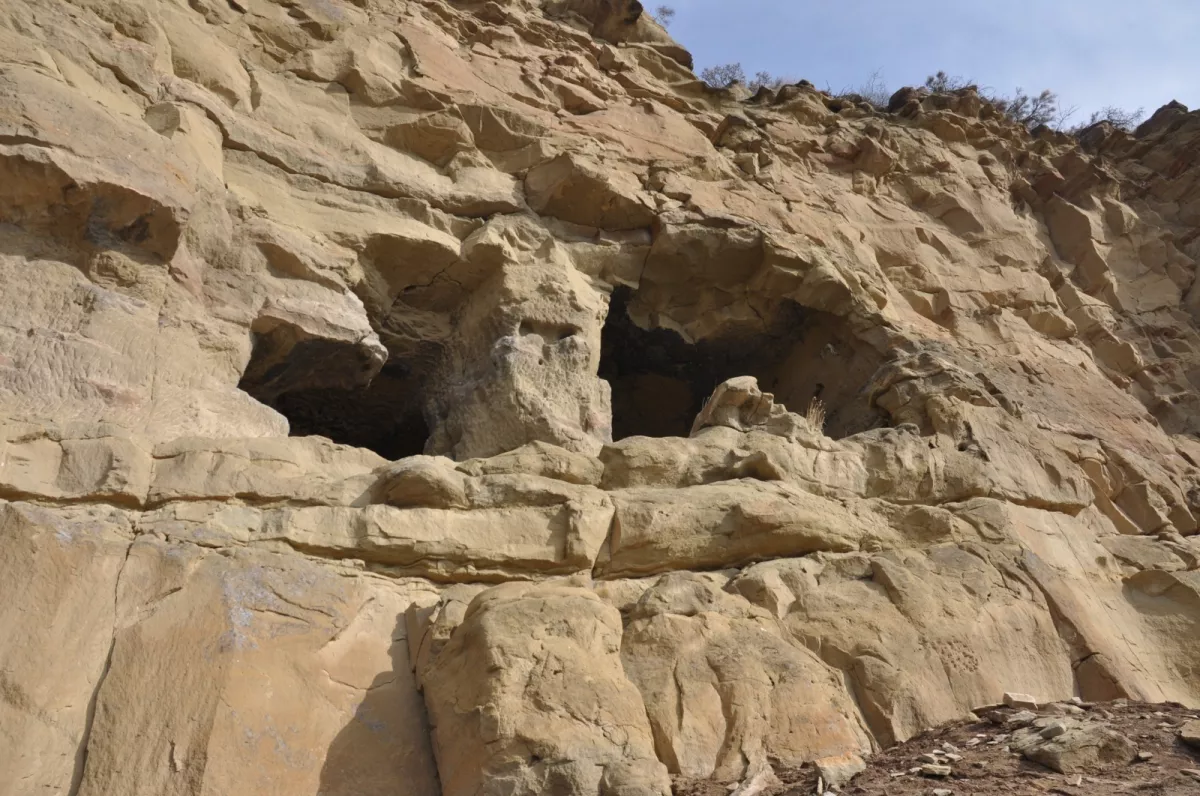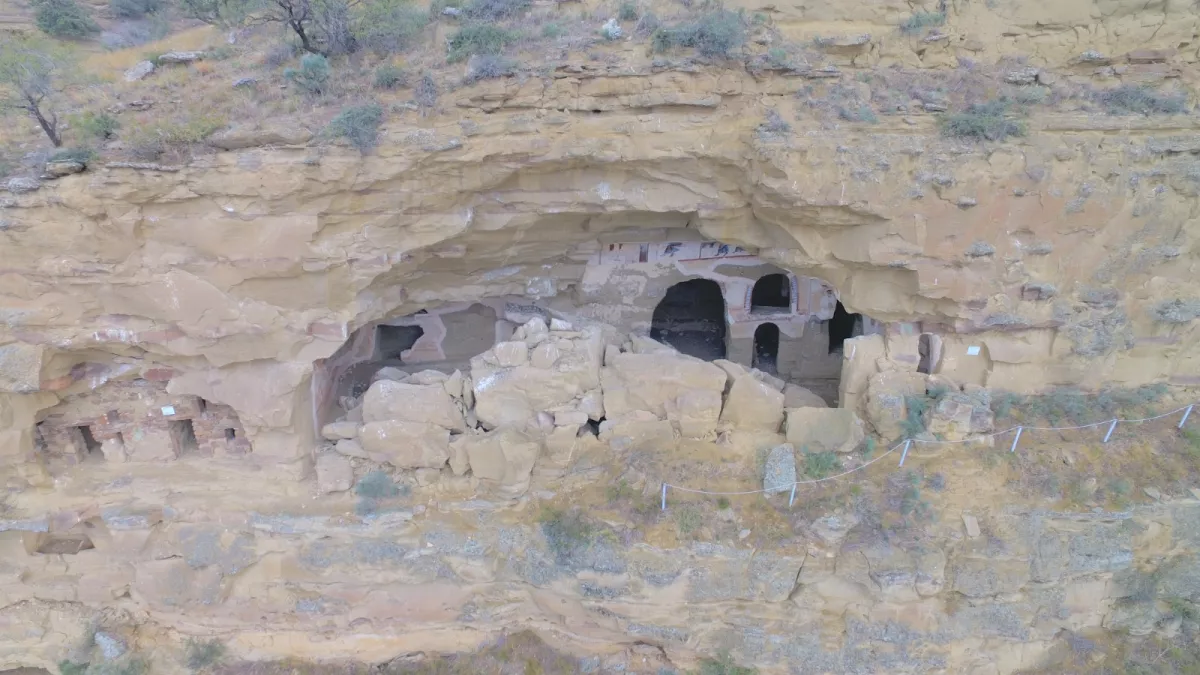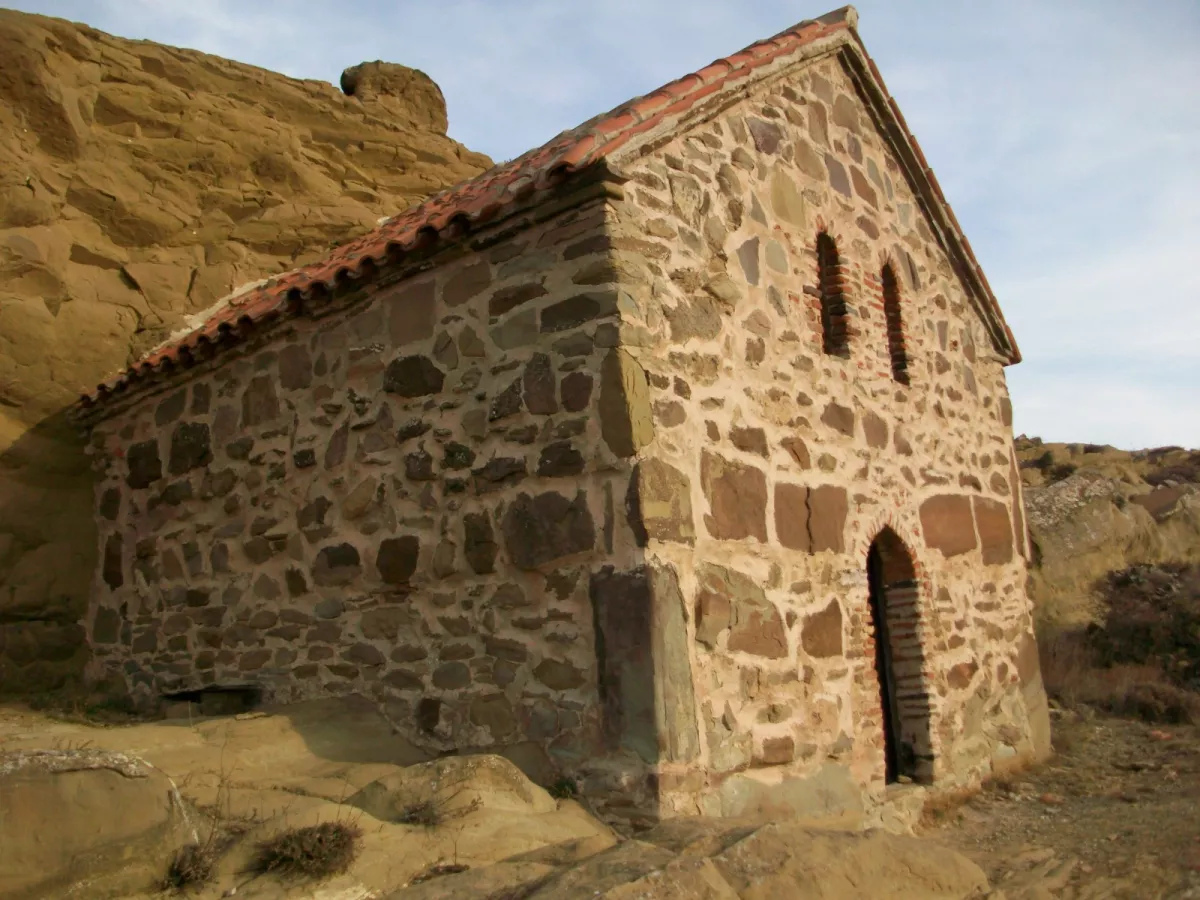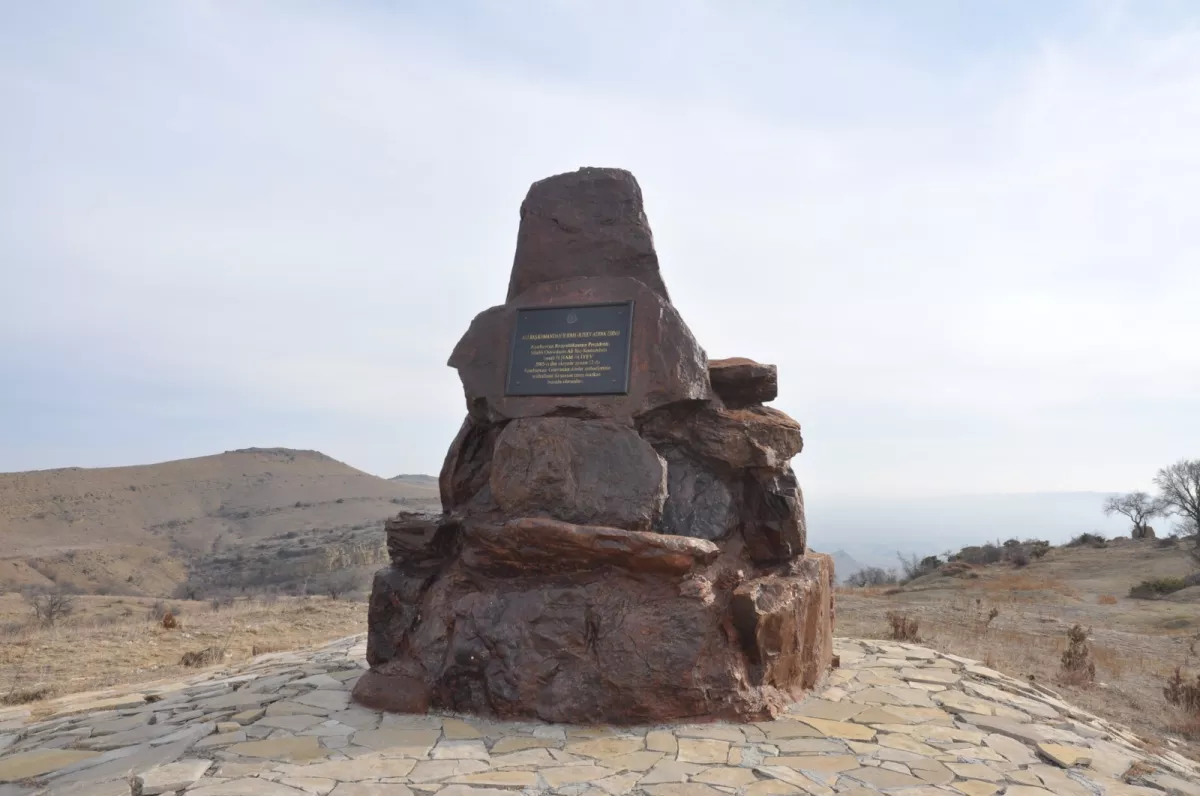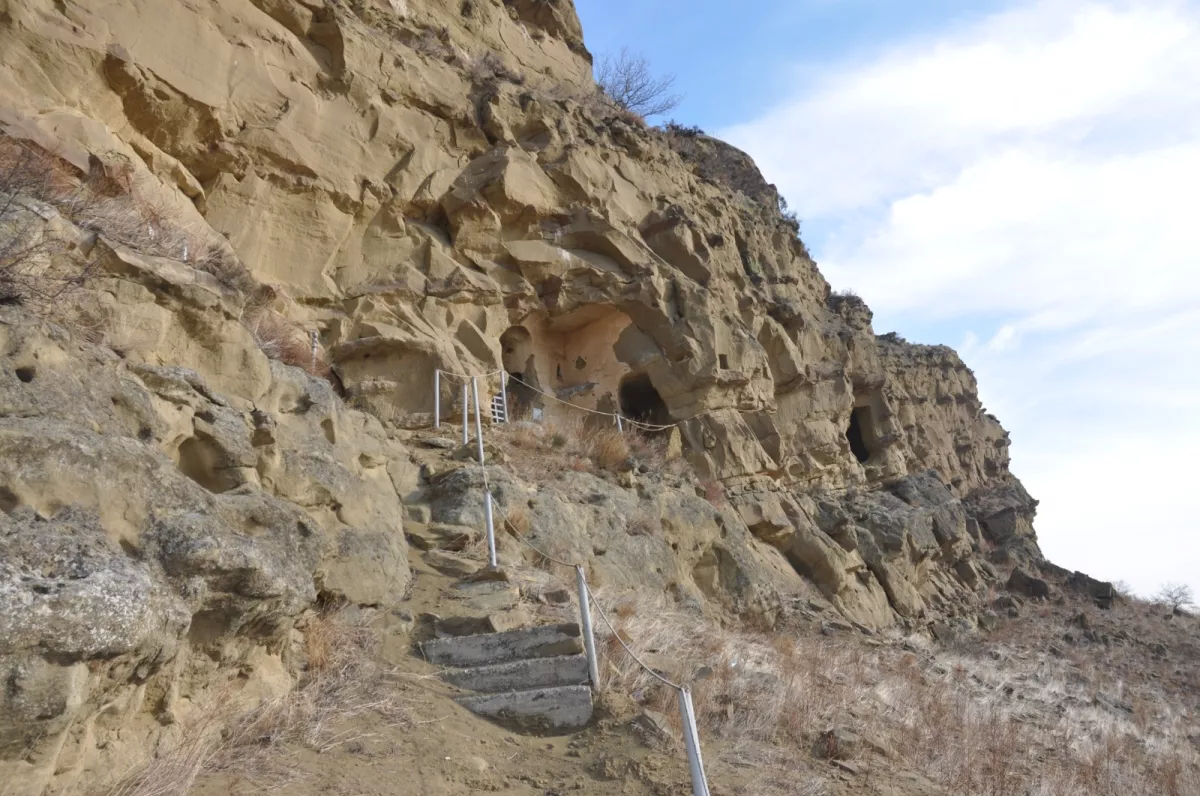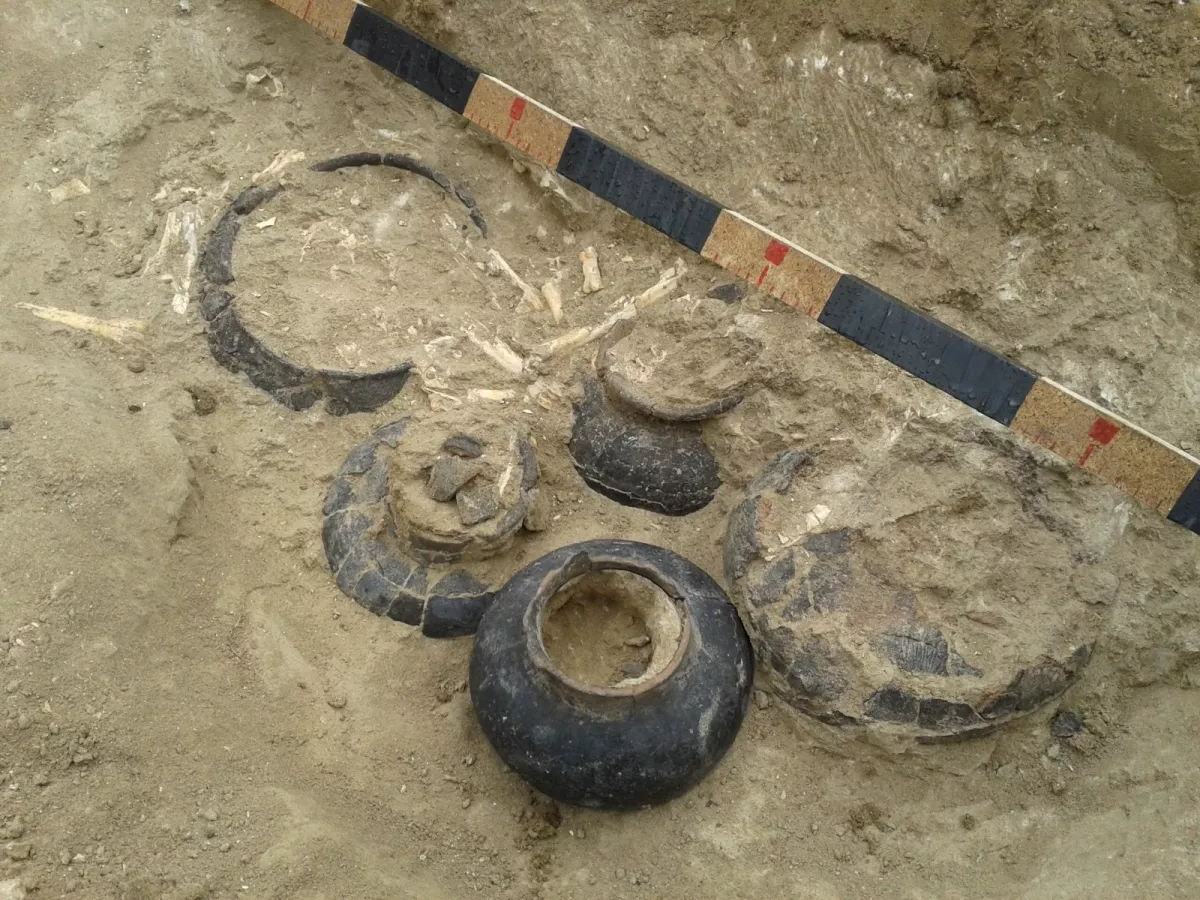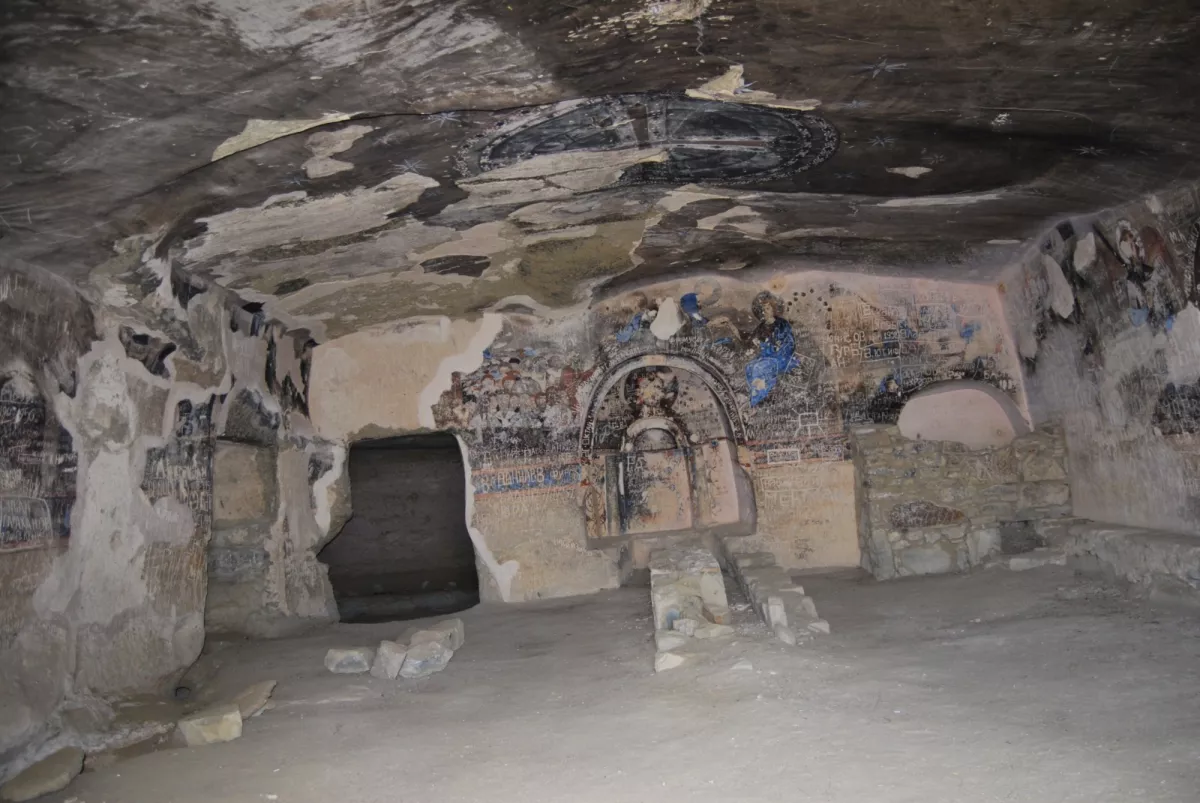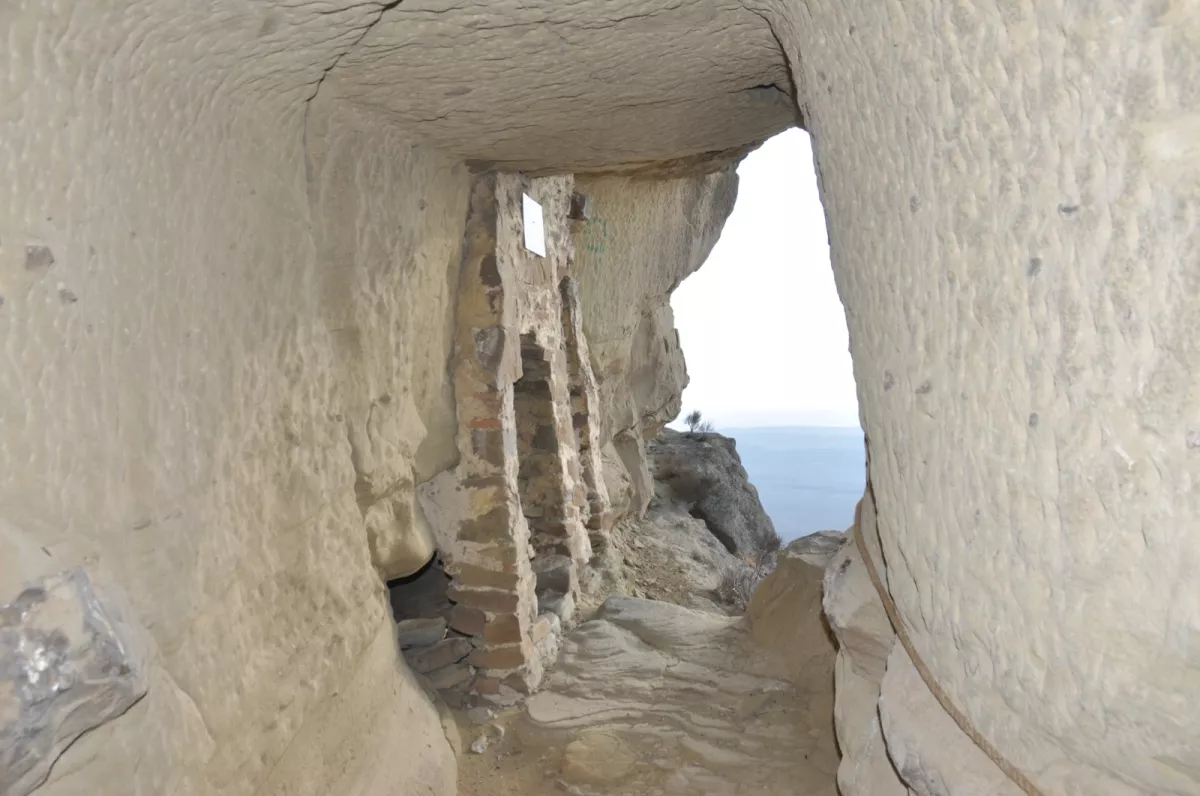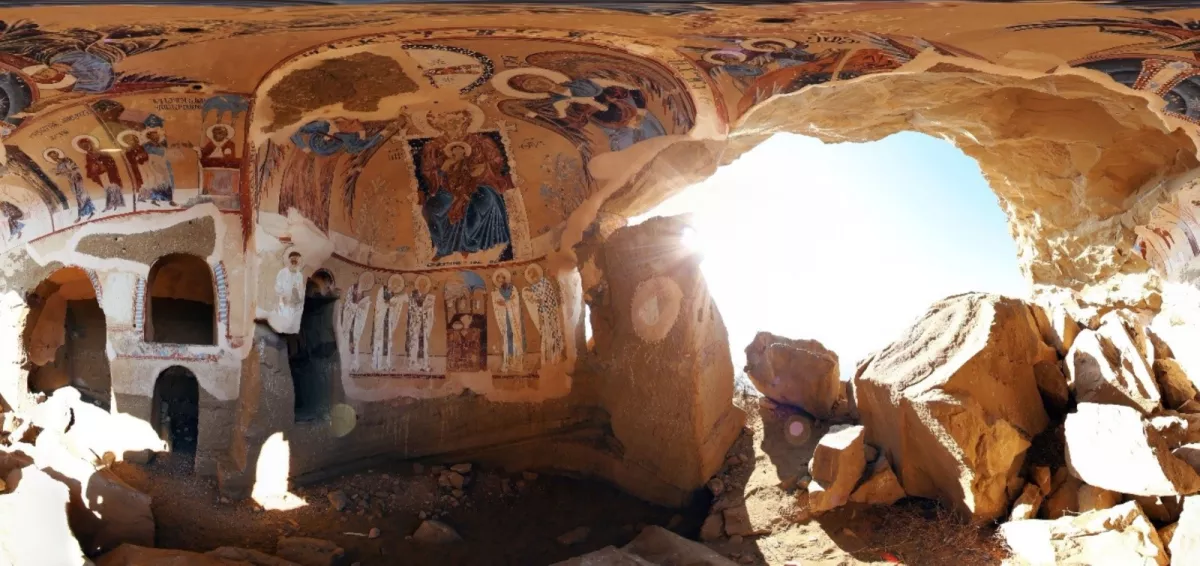Two-metre Bronze Age warrior: 3,800-year-old burial discovered in Azerbaijan PHOTO
As part of the project “Scientific Archaeological Excavations and Summer School-5 in Keshikchidagh,” organised by the Ministry of Culture of the Republic of Azerbaijan and the Institute of Archaeology and Anthropology of ANAS, scientists have made a remarkable discovery — the excavation of an ancient Bronze Age burial mound (kurgan), dated to the 3rd–2nd millennium BCE.
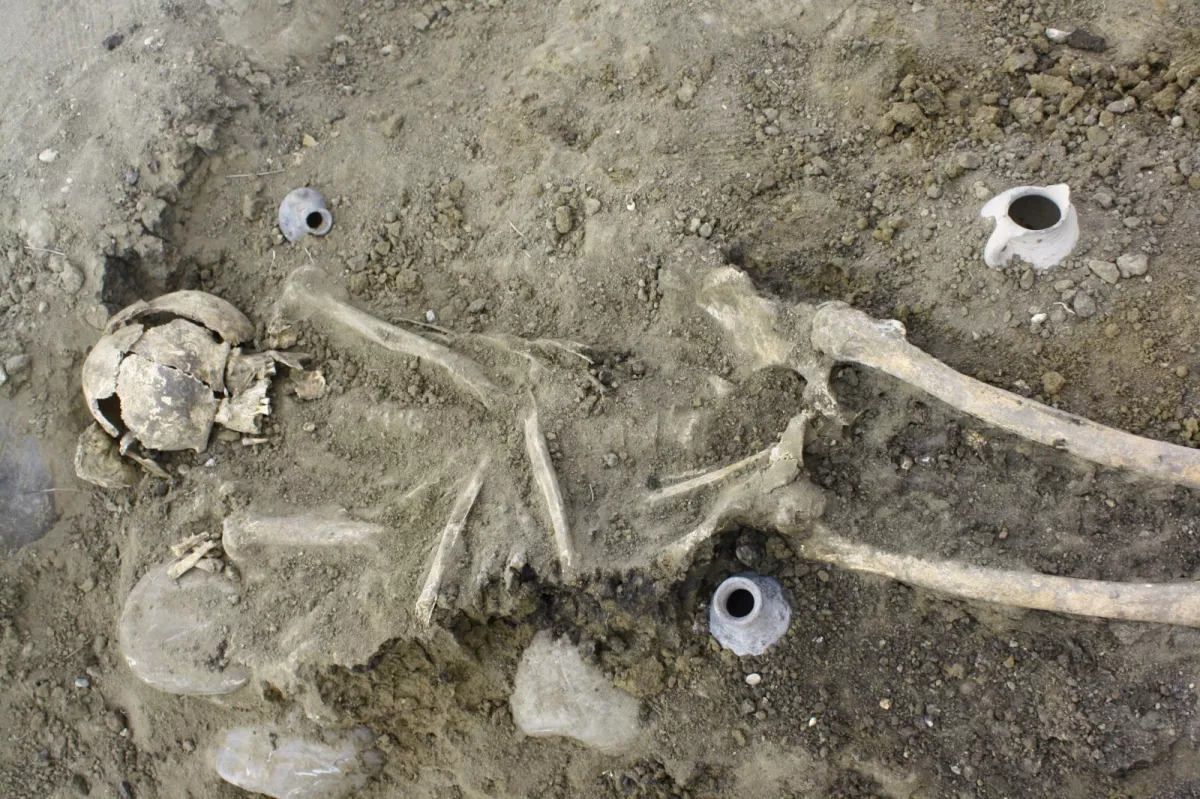
The expedition took place in the "Yovsanlidere" area on the Jeyranchol plain, led by Associate Professor Shamil Najafov of the Institute of Archaeology. Archaeologists uncovered a two-metre-high kurgan with a burial chamber containing the skeleton of a man over two metres tall — presumably a military commander. He was buried in a crouched position, holding a bronze spear in his hand, highlighting his warrior status.
The grave was divided into three sections: one contained the skeleton and personal belongings, the second held ceramic vessels, and the third was empty. Researchers believe this symbolic division is linked to beliefs in the afterlife — with each zone potentially representing areas for sleeping, eating, and performing rituals of the deceased.
Among the artefacts found were:
-
Bronze ornaments
-
Obsidian tools (made of volcanic glass)
-
Beads
-
12 ceramic vessels with white inlay (patterns filled with a white substance)
-
Bones of boiled animals — goat, cow, horse, and wild boar — likely intended as food for the afterlife
Above the burial chamber, archaeologists discovered 14 massive limestone slabs, each weighing about a tonne, arranged in a checkerboard pattern. At the "head" of the kurgan stood a stone idol shaped like a bull — possibly symbolising strength or protection.
A round limestone seal was also found — an early form of administrative insignia, presumably associated with ownership or authority.
“The anatomical positioning of the skeleton and spear, as well as the rarity of this type of spearhead across the entire South Caucasus, make this discovery truly exceptional,” noted the head of the project. Such artefacts provide valuable insights into the social structures, military organisation, and belief systems of Bronze Age societies.
According to members of the excavation team, this is one of the most remarkable archaeological discoveries in Azerbaijan in recent years. It offers a fresh perspective on the rituals, societal order, and daily life of the Bronze Age.




